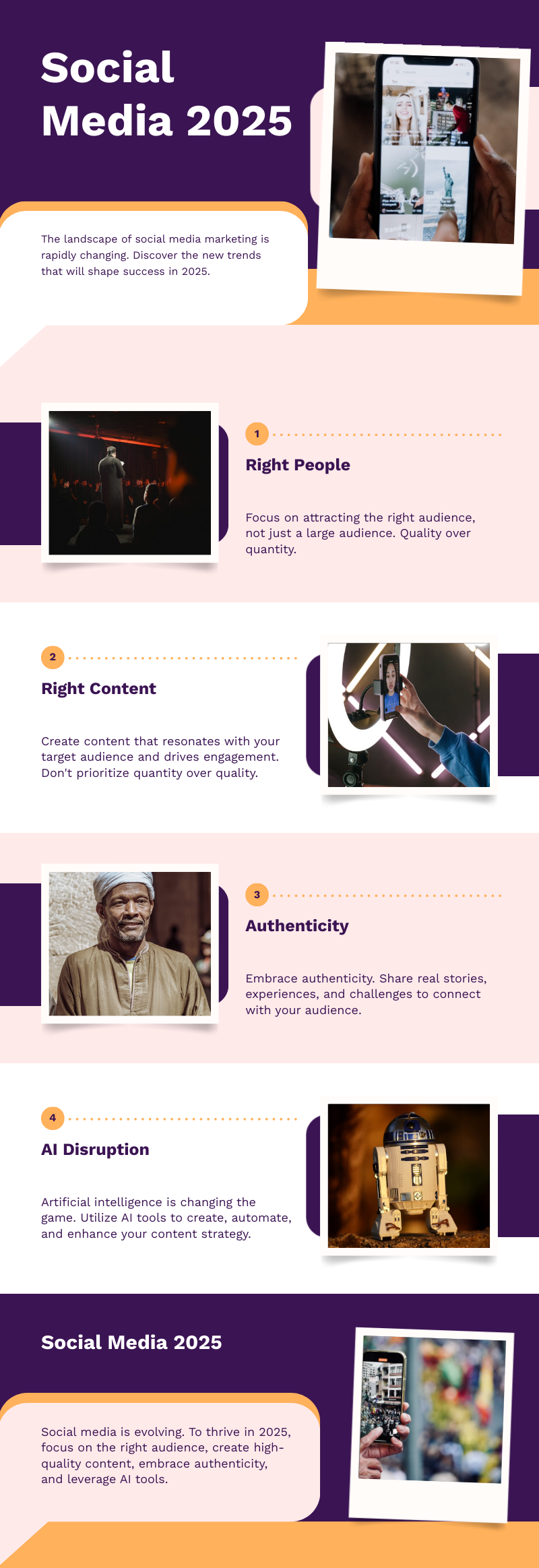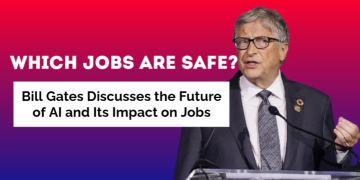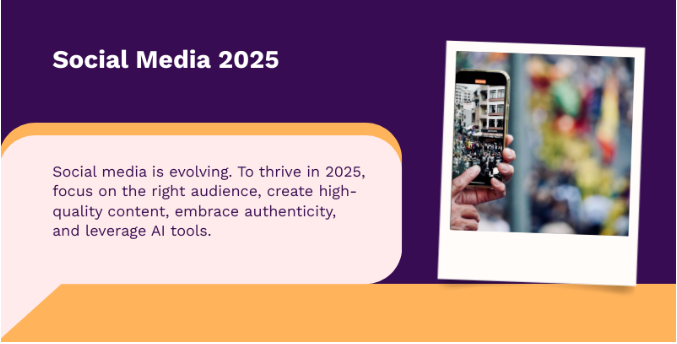If you’re a social media manager, marketer, or content creator, you probably agree that the past year has been incredibly tough. The digital landscape is shifting, and it’s becoming harder than ever to get our content seen.
Gone are the days when a simple Facebook post could go viral and bring massive traffic to a website. Just a few years ago, a post with 1,000 likes could easily reach over 100,000 people because platforms prioritized engagement.
If a post performed well, the algorithm would push it to even more users, making organic reach a goldmine for businesses, publishers, and creators.
But today, everything is different. Social media posts are struggling to reach even our own followers. The numbers are declining across all platforms—views, reach, and overall exposure. And let’s be honest, this is stressful and overwhelming for anyone who relies on social media for marketing, branding, or business growth.
Why is this happening?
You may be wondering why your posts aren’t performing like they used to. Why are fewer people seeing your content? Why is engagement dropping, no matter how much effort you put in? The simple truth is that social media platforms have changed their priorities.
Instead of showing content from the pages and people we follow, platforms now prioritize algorithm-driven recommendations.
Social networks like Facebook, Instagram, and YouTube are learning what users like based on their behavior rather than the accounts they follow.
This means even if someone follows your page, there’s no guarantee they will see your content. Instead, they will see whatever the platform believes they will engage with the most.
The Social Media Challenges of 2025
A survey found that 87% of marketers are concerned that technology, particularly AI, will replace their jobs. And it’s no surprise—social media is evolving at an unprecedented rate. Some of the biggest challenges in 2025 include:
- Declining Organic Reach: Your posts aren’t reaching the same audience anymore, making it harder to gain visibility without paying for ads.
- Content Saturation: There is more content than ever before, making it extremely competitive to stand out.
- Changing Algorithms: Platforms are shifting towards AI-driven recommendations, pushing business content aside.
- The Rise of AI Content: AI-generated content is flooding social media, making it harder to compete with mass-produced material.
- Burnout Among Creators: Many creators feel pressured to post more frequently, but this often leads to exhaustion without significant results.
More Followers No Longer Mean More Reach
For years, social media success was measured by the number of followers or subscribers a page had. But in 2025, that metric is becoming meaningless.
Think about it—when you scroll through your social media feeds, do you only see posts from the accounts you follow? Probably not. Instead, platforms show you content from people and pages you’ve never interacted with. This is because algorithms are prioritizing entertainment value and user behavior over direct subscriptions.
Even YouTubers with millions of subscribers struggle to get their videos seen by their audience. A creator might have spent years building a dedicated fan base, but now, only a fraction of those subscribers actually see new content.
How Social Media Algorithms Work in 2025
The biggest shift in recent years has been influenced by TikTok. Unlike traditional platforms, TikTok’s algorithm doesn’t rely on who you follow. Instead, it learns what you like and continuously serves similar content.
Other platforms have adopted this model. Facebook, Instagram, and YouTube now prioritize content discovery over follower-based feeds. As a result, your carefully built audience might not even see your latest posts unless they align with the content they engage with the most.
The Battle Between Engagement and Entertainment
One of the biggest struggles for content creators today is competing with highly entertaining and addictive content. TikTok, Instagram Reels, and YouTube Shorts have completely changed the game.
These short, engaging videos are designed to keep users on the platform for as long as possible. And because social media companies make money through ads, they prefer content that maximizes retention. The longer users stay on a platform, the more ads they see, and the more money these companies make.
This means that if your content doesn’t keep people engaged, the algorithm will deprioritize it.
For example, YouTube’s most important metric today is retention—how long people stay watching your videos. If your content doesn’t hold attention, the platform will push other videos instead.
The Shift from More People to the Right People
Instead of focusing on getting as many followers as possible, creators now need to attract the right audience.
A broad audience might bring in more views, but it won’t necessarily convert into business success. If your goal is to sell a product, service, or course, having a smaller, engaged audience is more valuable than a large, passive one.
For example:
- A YouTube video with 1,000 highly engaged viewers who are interested in your business is better than one with 1 million random views that lead to no sales.
- A business page with 10,000 dedicated followers is more valuable than a page with 100,000 followers who never interact with the content.
Authenticity is the New Currency
With so much content flooding social media, authenticity is now more valuable than ever. People are tired of overly polished, sales-driven content. They crave real, raw, and personal stories that they can connect with on an emotional level.
Instead of producing perfect, high-budget videos, many creators are finding success with unfiltered, behind-the-scenes content. Sharing personal struggles, failures, and lessons learned is more relatable than just highlighting success.
For example:
- Instead of posting “How to Grow on YouTube”, try “How I Struggled to Grow My YouTube Channel and What I Did About It.”
- Instead of saying “My Business is Thriving!”, try “Here’s How I Lost Money in My Business and What I Learned.”
Vulnerability and storytelling build trust and connection. And trust is the foundation of any successful online business.
AI Disruption: The Game Changer
AI is rapidly transforming content creation, and the impact will only increase in 2025. According to OpenAI’s CEO Sam Altman, 95% of what marketers, agencies, and creative professionals do today will be automated by AI.
This means:
- AI will produce high-quality content faster than humans.
- AI-powered tools will make it easier for new creators to compete with established ones.
- AI will generate realistic images, videos, and voiceovers, making production cheaper and more accessible.
- The competition for attention will become even fiercer as more creators flood the market.
Creators who fail to adapt to AI tools risk being left behind. But those who embrace AI and learn how to leverage it will have an advantage.
The Future of Content Creation
The social media landscape is shifting faster than ever, and creators need to rethink their strategies. Here’s what matters most in 2025:
- Quality Over Quantity – Posting more often doesn’t guarantee success. Focus on meaningful, impactful content.
- Engagement Over Views – A smaller, loyal audience is better than a large, disengaged one.
- Authenticity Over Perfection – People crave real, relatable stories, not just polished marketing.
- AI as a Tool, Not a Threat – Creators who use AI effectively will stay ahead of the competition.

Final Thoughts
The future of social media is uncertain, but one thing is clear—the old rules no longer apply. Success is no longer about having the most followers, the most views, or the most posts. It’s about building a meaningful connection with the right audience.
Those who adapt, innovate, and stay true to their message will thrive. Those who resist change will struggle.
So, the real question is: Are you ready for the new era of social media?












































